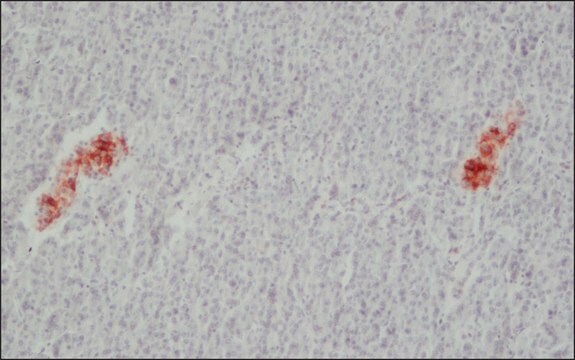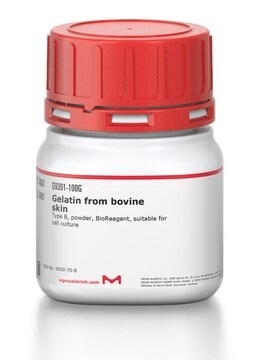G4896
Monoclonal Anti-Gelsolin antibody produced in mouse
clone GS-2C4, ascites fluid
Synonym(s):
Gelsolin Detection Antibody, Mouse Anti-Gelsolin
About This Item
Recommended Products
biological source
mouse
Quality Level
conjugate
unconjugated
antibody form
ascites fluid
antibody product type
primary antibodies
clone
GS-2C4, monoclonal
contains
15 mM sodium azide
species reactivity
bovine, pig, human, rabbit
technique(s)
immunohistochemistry (formalin-fixed, paraffin-embedded sections): suitable using heat-induced antigen retrieval sections
immunohistochemistry (frozen sections): suitable
indirect ELISA: suitable
microarray: suitable
western blot: 1:1,000 using human plasma
isotype
IgG1
UniProt accession no.
shipped in
dry ice
storage temp.
−20°C
target post-translational modification
unmodified
Gene Information
human ... GSN(2934)
Related Categories
General description
Specificity
Immunogen
Application
Biochem/physiol Actions
Target description
Other Notes
SAB4200750 Anti-Gelsolin antibody, Mouse Monoclonal
clone GS-2C4, purified from hybridoma cell culture
Disclaimer
Not finding the right product?
Try our Product Selector Tool.
Related product
Storage Class
10 - Combustible liquids
wgk_germany
WGK 1
flash_point_f
Not applicable
flash_point_c
Not applicable
Choose from one of the most recent versions:
Already Own This Product?
Find documentation for the products that you have recently purchased in the Document Library.
Our team of scientists has experience in all areas of research including Life Science, Material Science, Chemical Synthesis, Chromatography, Analytical and many others.
Contact Technical Service







